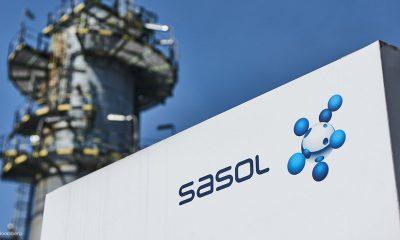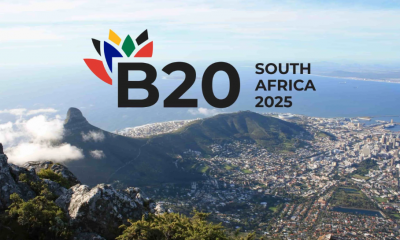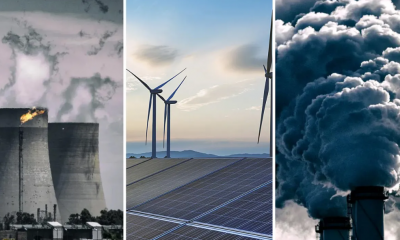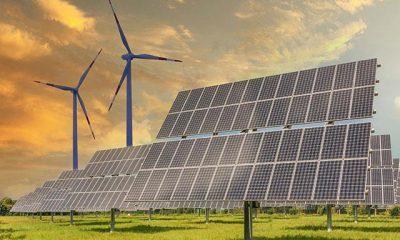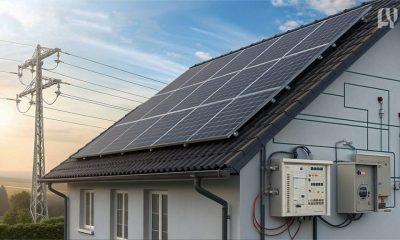Business
Chile and South Africa Could Export Green Hydrogen – But Mounting Debt Is a Major Risk

As global economies push for decarbonisation, Chile and South Africa have emerged as potential powerhouses in green hydrogen production. But while these projects promise cleaner energy and export revenue, the high cost of setting up the necessary infrastructure—combined with limited public funds—could trap both countries in a cycle of unsustainable debt.
What Is Green Hydrogen—and Why Does It Matter?
Green hydrogen is created by splitting water into hydrogen and oxygen using renewable energy. This clean energy source has the potential to drastically cut emissions in hard-to-decarbonise sectors like steel, fertiliser, and cement production.
The Hydrogen Council, which includes major global firms like Anglo American, Bosch, and Linde, has already listed over 1,400 green hydrogen projects worldwide, amounting to US$320 billion in planned investment.
European governments are betting on countries like Chile and South Africa—with their abundant solar and wind resources—to supply green hydrogen and its derivatives, such as green ammonia and renewable methanol. By the 2030s, EU green hydrogen imports could hit 10 million tonnes annually.
Chile and South Africa’s Ambitions
Chile aims to replace fossil fuels in its copper mining sector and become a global exporter of green hydrogen derivatives. South Africa views green hydrogen both as an export commodity and as a solution for decarbonising its coal-heavy industries, particularly chemicals (Sasol) and steel (ArcelorMittal).
Both countries have national road maps in place. Chile’s National Green Hydrogen Strategy outlines market opportunities and training programmes. South Africa’s 2021 Hydrogen Society Road Map and the Green Hydrogen Commercialisation Strategy propose industry clusters and production targets of 1 million tonnes of green hydrogen exports by the 2030s.
The Financial Trap: Loans Over Grants
Despite these bold strategies, both nations face the same critical issue: how to finance the transition without drowning in debt.
In Chile, the government is building up a US$1 billion Green Hydrogen Fund, supported by the World Bank, KfW, and others, with a goal to grow the fund to US$12.5 billion. South Africa is relying on a US$7 billion Just Energy Transition Investment Plan, backed by the UK and EU. However, only 4% of this funding comes in the form of grants—the rest are loans.
Researchers warn that these debt-heavy models are risky. “In the worst case,” they write, “loans provided to private companies that are not paid back may bankrupt the state.”
De-Risking Efforts Fall Short
Governments in both countries have tried to de-risk investment by offering tax incentives and low-interest loans. But according to economists studying the sector, these methods fail to address deeper issues—such as infrastructure gaps, weak local supply chains, and volatile global demand and pricing.
To build a truly sustainable green hydrogen sector, experts argue that the focus should be on building local capacity, supporting small and medium enterprises, and creating favourable regulatory environments—not just attracting foreign investment.
What Wealthy Nations Should Do
For the green hydrogen economy to thrive globally, richer nations must shoulder more of the financial risk. One effective strategy: long-term purchase agreements that guarantee demand at fixed prices. Germany and Namibia have already taken early steps in this direction.
This kind of support would allow countries like South Africa and Chile to develop green hydrogen capacity without mortgaging their futures. It would also ensure a more equitable global energy transition, where clean energy production does not come at the cost of local development or fiscal sustainability.
What’s Next?
As G20 host nation in 2025, South Africa will be under the global spotlight. The success—or failure—of its green hydrogen ambitions could become a test case for whether developing countries can lead the clean energy revolution without falling into a debt trap.
{Source EB News Daily}
Follow Joburg ETC on Facebook, Twitter , TikTok and Instagram
For more News in Johannesburg, visit joburgetc.com

